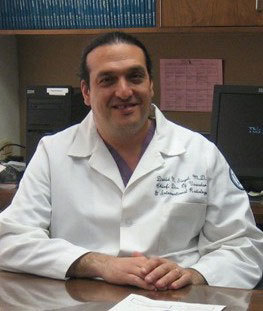
David N Siegel, chief, Division of Vascular and Interventional Radiology, Northshore Island Jewish Health System, New York, USA, told delegates at GEST 2012 US that interventional radiologists must take primary responsibility for the initial evaluation and management of post-uterine fibroid embolization patients.
“Interventional radiologists must be available, respond quickly and collaborate with gynaecology in order to address any complications or failures that arise after the procedure. However, it is important to remember that the serious complication rate associated with uterine fibroid embolization is quite low,” he said.
Siegel noted that complete infarction of the fibroids after uterine fibroid embolization led to greater symptom control while incomplete infarction led to increased interventions after.
Infarction depends on technical issues such as catheterisation and spasm, achieving the embolization endpoint and ovarian embolization. When infarction of fibroids is an issue, the patients can be referred for a hysterectomy, he said.
Based on Scott C Goodwin et al’s Reporting Standards for Uterine Artery Embolization for the Treatment of Uterine Leiomyomata, Siegel explained that complications associated with uterine fibroid embolization included those associated with of angiography (such as dissection, renal failure), non-target embolization, radiation injury, adverse drug reaction and pulmonary embolism. They could also include pelvic infection, uterine infarction, post-embolization syndrome, passage of fibroid tissue and ovarian/sexual dysfunction.
Siegel then focussed on uterine infarction, post-embolization syndrome, pelvic infection and fibroid tissue passage. “Post-embolization syndrome can be seen as a complication or expected event after uterine fibroid embolization, but can require re-admission or prolonged hospitalisation. It can occur after embolization of a solid parenchymal organ such as the liver, kidney, spleen, or uterus. It is characterised by self-limiting pain, nausea, vomiting, loss of appetite, malaise and fever and can affect roundabout 40% of patients who undergo fibroid embolization,” Siegel noted. Treatment of post-embolization syndrome includes hydration an anti-inflammatory regimen, narcotics and an anti-emetic.
In order to distinguish between post-embolization syndrome vs. infection, it is important to take into account the time for symptoms to appear, Siegel clarified. “Post-embolization syndrome occurs in the days following uterine artery embolization, whereas infection usually occurs weeks later and is usually accompanied by foul-smelling discharge.
Enduring symptoms favour infection,” Siegel said. In cases of suspected infection vs. prolonged post-embolization syndrome, the factors that need to be considered are prolonged symptoms, foul-smelling discharge, a white blood count of more than 18–20,000 and non-aborting debris in the cavity. “Cultures must be taken and broad spectrum antibiotics (including those covering beta-lactamase producing anaerobes) and hydration made available to the patient. The clinical condition of the patient and white blood cell count need to be monitored. Imaging must be performed and in the case of debris, the patient can be referred for hysteroscopy, or hysterectomy,” Siegel advised.
With regard to the transcervical passage of fibroids, Siegel told delegates to be prepared to deal with aborting fibroids at any time post-procedure. The passage of debris can be managed by vaginal/hysteroscopic resection, he noted.
Siegel made the point that evaluation of symptomatic patients post uterine fibroid embolization needed to focus on the timing in the history. Typically, infarction and post-embolization syndrome occur early and infection and fibroid expulsion later. “The physical should include an internal exam, the clinical exam was important in identifying signs of fever and a white blood cell count; imaging should be performed to exclude any abscess, infarction post-embolization syndrome vs endometritis and debris,” he recommended.












